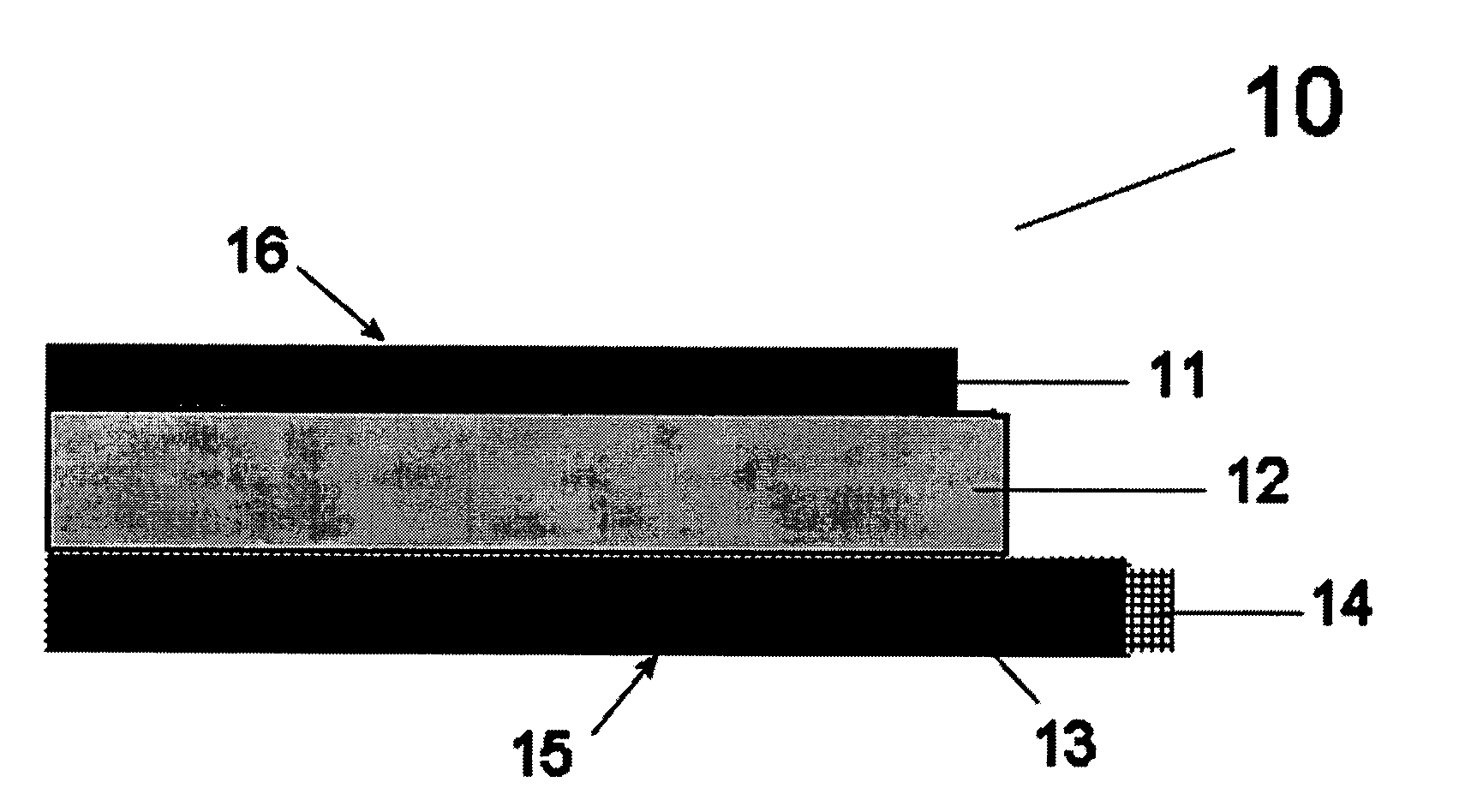Fuel cell cathode with redox couple
a fuel cell and active material technology, applied in the direction of fuel cells, electrochemical generators, cell components, etc., can solve the problems of large use of fuel cells, low conversion efficiency of .e.m. fuel cells, and high cost of noble metals, so as to improve the operating temperature range, increase efficiency and power availability, the effect of increasing voltage and curren
- Summary
- Abstract
- Description
- Claims
- Application Information
AI Technical Summary
Benefits of technology
Problems solved by technology
Method used
Image
Examples
Embodiment Construction
[0040]This invention relates to catalysts for oxygen electrodes in fuel cells which operate through the mechanism of redox reactions. Such oxygen electrodes, or oxidizable electrodes, provide the fuel cells in which they are used, particularly alkaline fuel cells, with a level of electrochemical energy storage within the oxygen electrode itself. This means that such fuel cells will have a “buffer” or “charge” of reactant available within the oxygen electrode at pre-startup which, particularly combined with hydrogen storage anodes described in copending U.S. application Ser. No. 09 / 524,116 (the disclosure of which is hereby incorporated by reference), yield instant start fuel cells in general and more specifically to Ovonic instant start alkaline fuel cells. Such fuel cells have a built in reserve of hydrogen within the hydrogen electrode and oxygen electrode reactant (possibly oxygen) in the oxygen electrode for instant startup (discussed herein below), and have the ability to accep...
PUM
| Property | Measurement | Unit |
|---|---|---|
| temperatures | aaaaa | aaaaa |
| temperatures | aaaaa | aaaaa |
| operating temperature | aaaaa | aaaaa |
Abstract
Description
Claims
Application Information
 Login to View More
Login to View More - R&D
- Intellectual Property
- Life Sciences
- Materials
- Tech Scout
- Unparalleled Data Quality
- Higher Quality Content
- 60% Fewer Hallucinations
Browse by: Latest US Patents, China's latest patents, Technical Efficacy Thesaurus, Application Domain, Technology Topic, Popular Technical Reports.
© 2025 PatSnap. All rights reserved.Legal|Privacy policy|Modern Slavery Act Transparency Statement|Sitemap|About US| Contact US: help@patsnap.com



